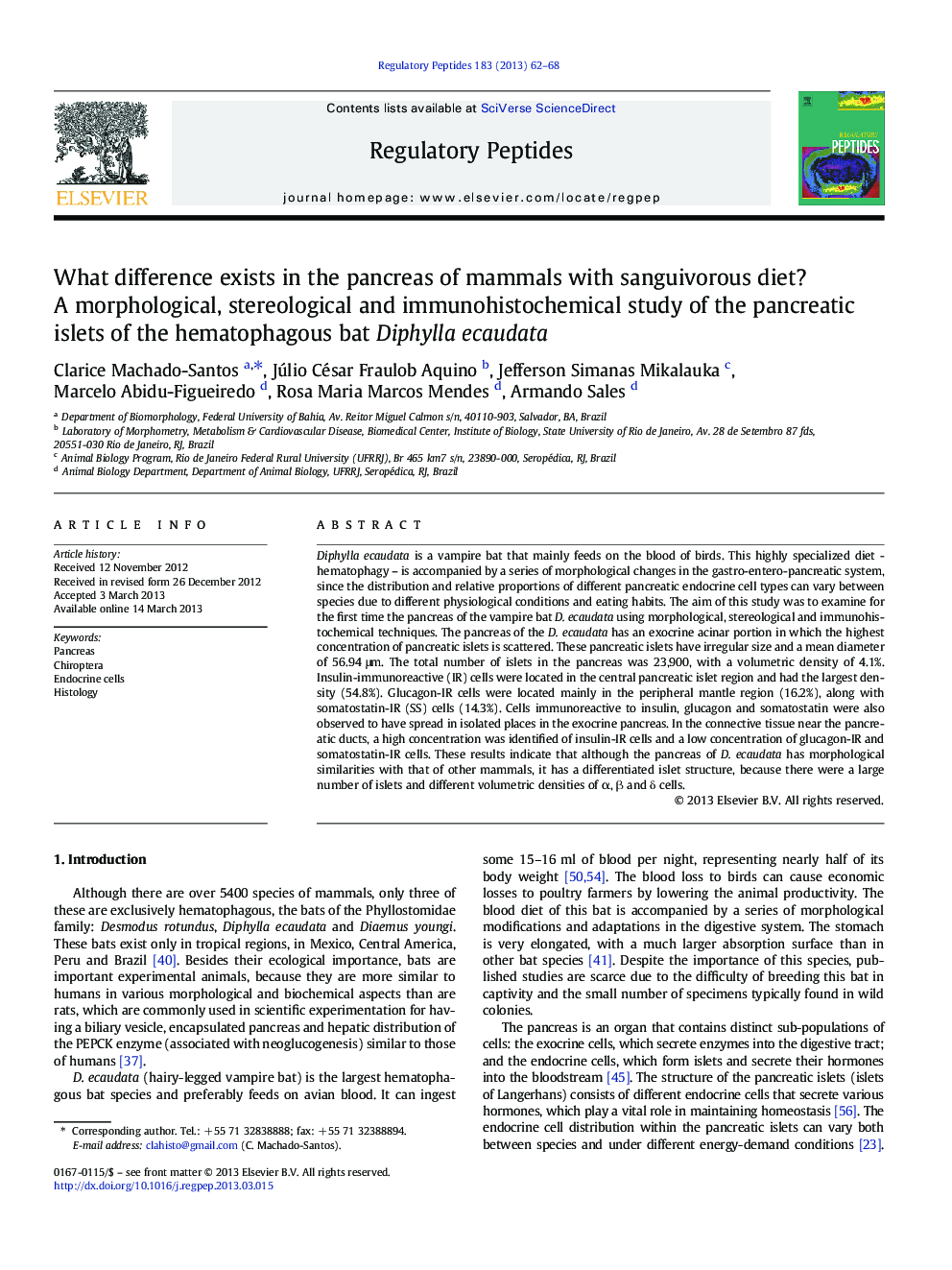| Article ID | Journal | Published Year | Pages | File Type |
|---|---|---|---|---|
| 2022447 | Regulatory Peptides | 2013 | 7 Pages |
•The D. ecaudata has high numerical index of pancreatic islets.•The D. ecaudata has higher volumetric densities of δ cells and lower of α cells.•There is a high concentration of insulin-IR cells in the pancreatic ducts.
Diphylla ecaudata is a vampire bat that mainly feeds on the blood of birds. This highly specialized diet - hematophagy – is accompanied by a series of morphological changes in the gastro-entero-pancreatic system, since the distribution and relative proportions of different pancreatic endocrine cell types can vary between species due to different physiological conditions and eating habits. The aim of this study was to examine for the first time the pancreas of the vampire bat D. ecaudata using morphological, stereological and immunohistochemical techniques. The pancreas of the D. ecaudata has an exocrine acinar portion in which the highest concentration of pancreatic islets is scattered. These pancreatic islets have irregular size and a mean diameter of 56.94 μm. The total number of islets in the pancreas was 23,900, with a volumetric density of 4.1%. Insulin-immunoreactive (IR) cells were located in the central pancreatic islet region and had the largest density (54.8%). Glucagon-IR cells were located mainly in the peripheral mantle region (16.2%), along with somatostatin-IR (SS) cells (14.3%). Cells immunoreactive to insulin, glucagon and somatostatin were also observed to have spread in isolated places in the exocrine pancreas. In the connective tissue near the pancreatic ducts, a high concentration was identified of insulin-IR cells and a low concentration of glucagon-IR and somatostatin-IR cells. These results indicate that although the pancreas of D. ecaudata has morphological similarities with that of other mammals, it has a differentiated islet structure, because there were a large number of islets and different volumetric densities of α, β and δ cells.
